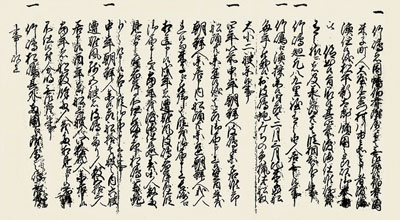- Dokdo in the East Sea
- Controversies surrounding Dokdo
- Ten Truths about Dokdo Not Known in Japan
Dokdo in the East Sea
Table of Contents Open Contents
- Ten Truths about Dokdo Not Known in Japan
- 1. Japan claims it has long recognized the existence of Dokdo.
- 2. Japan claims there is no evidence that Korea recognized the existence of Dokdo in the past
- 3. Japan claims that it established its sovereignty over Dokdo in the mid-seventeenth century.
- 4. Japan claims that it banned passage to Ulleungdo in the late seventeenth century, but did not ban passage to Dokdo
- 5. Japan claims that Ahn Yong-bok’s statement is not reliable
- 6. Japan claims Japan reaffirmed its intention to claim sovereignty over Dokdo by incorporating the island into Shimane Prefecture in 1905
- 7. Japan claims that while drafting the San Francisco Peace Treaty the United States suggested that Dokdo is under the jurisdiction of Japan
- 8. Japan claims the designation of Dokdo as a bombing range for military practice for the United States Forces in Japan shows that Dokdo was treated as part of Japan’s territory
- 9. Japan claims that the Republic of Korea is illegally occupying Dokdo
- 10. Japan claims although Japan proposed to the Republic of Korea to refer this dispute over Dokdo to the International Court of Justice, the Republic of Korea rejects doing so.
Japan claims that it established its sovereignty over Dokdo in the mid-seventeenth century.
In 1618, during the early Edo period, the Oya and Murakawa families, who were residents of Yonago in Tottori domain, received permission from the Edo Shogunate for passage to Ulleungdo. There they engaged in a fishing monopoly and offered abalone to the Edo government. Dokdo naturally was used as a stopover en route to Ulleungdo, and served as a fishing ground for abalone and a hunting ground for black sea lions. Thus, Japan established its sovereignty over Dokdo by the mid-seventeenth century at the very latest.
Japan’s claims is not true because...
the Edo Shogunate and Tottori domain perceived Ulleungdo and Dokdo as Korean territory.
Permission is not necessary for passage to one’s domestic islands. Thus, Japan’s claim itself demonstrates that Japan had not recognized Dokdo and Ulleungdo as its territories.
A Japanese document from the mid-seventeenth century, “Records on Observation in Oki Province” (Inshu shicho goki, 1667), states that the Oki Islands mark the northwestern boundary of Japan. This indicates that Japan had not perceived Ulleungdo and Dokdo as its land.
When territorial issues arose between Joseon and Japan after the Ahn Yong-bok incident, the Edo Shogunate asked Tottori domain if there were “any islands attached to Tottori domain other than Takeshima [that is, Ulleungdo].” Here, the domain answered that “no other islands belong to the domain, including Takeshima [that is, Ulleungdo] and Matsushima [that is, Dokdo],” showing that both islands were not under the jurisdiction of Tottori domain (see Material 6).
Based upon such a response, the Edo Shogunate issued the prohibition of Japanese passage to Ulleungdo on the twenty-eighth day of the first month of 1696. Thus, contrary to the Japanese government’s claim, Japan recognized Ulleungdo and Dokdo as Joseon’s territories in the late seventeenth century.
-
- MATERIAL 6. Tottori Domain’s Answer to the Inquiry from the Edo Shogunate (1695)
-
 Tottori Domain’s Answer to the Inquiry from the Edo Shogunate (1695)“Takeshima [that is, Ulleungdo] does not belong to Inaba and Hoki [that is, Tottori domain]. It is heard that Oya Kuemon and Murakawa Ichibe, who were merchants from Yonago, in Hoki, were permitted to sail to and fish at the island through a sealed letter when Matsudaira Shintaro was governing the area. It is also heard that some people used to sail to the island before these merchants, but we are not well aware of that.
Tottori Domain’s Answer to the Inquiry from the Edo Shogunate (1695)“Takeshima [that is, Ulleungdo] does not belong to Inaba and Hoki [that is, Tottori domain]. It is heard that Oya Kuemon and Murakawa Ichibe, who were merchants from Yonago, in Hoki, were permitted to sail to and fish at the island through a sealed letter when Matsudaira Shintaro was governing the area. It is also heard that some people used to sail to the island before these merchants, but we are not well aware of that.
(omitted)
No other islands belong to the domain, including Takeshima [that is, Ulleungdo] and Matsushima [that is, Dokdo].”








